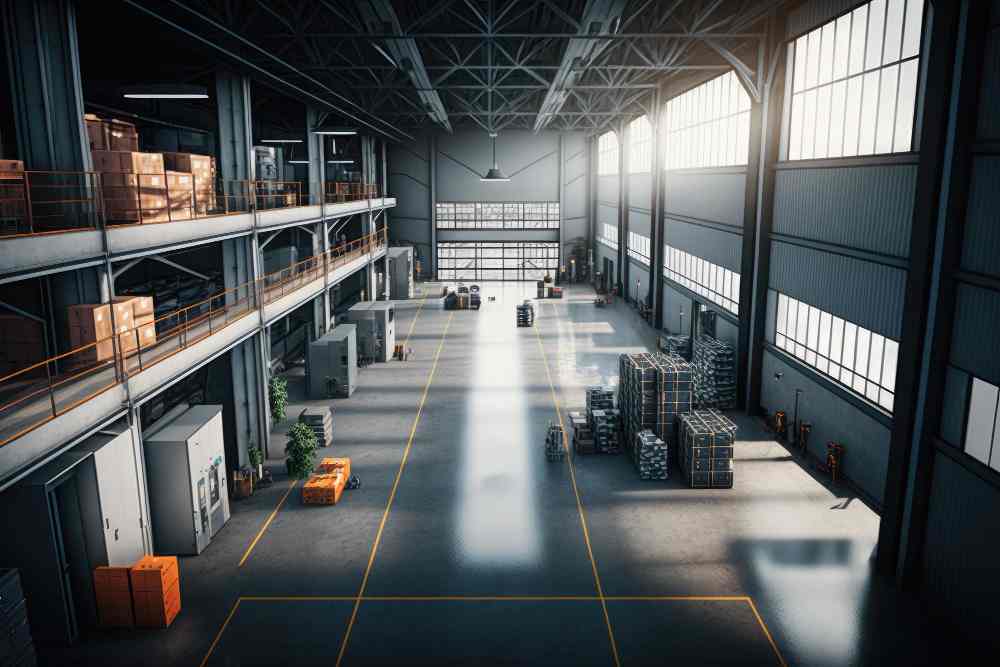Discover the various types of warehouse racking systems available in Malaysia, their benefits, and how to choose the right one for your storage needs.
Efficient storage solutions are the backbone of any successful warehouse operation. The demand for effective racking for warehouse systems has surged in Malaysia’s rapidly growing industrial sector. This guide delves into the various types of warehouse racking systems available in Malaysia, their benefits, and key considerations for selection.
Types of Warehouse Racking Systems
Understanding the different racking systems can help you select the most suitable one for your warehouse needs.
1. Selective Pallet Racking
Selective pallet racking is the most common system, offering direct access to each pallet. It’s versatile and can be adjusted to accommodate various pallet sizes.
-
Advantages:
- Easy access to all pallets
- Cost-effective
- Simple installation and adjustment
-
Considerations:
- Requires sufficient aisle space
- Lower storage density compared to other systems
2. Drive-In Racking
Drive-in racking allows forklifts to enter the rack structure to load and retrieve pallets. It’s ideal for storing large quantities of homogeneous products.
-
Advantages:
- Maximizes storage space by reducing aisles
- Suitable for high-density storage
-
Considerations:
- Limited access to individual pallets
- Best for products with low turnover rates
3. Cantilever Racking
Cantilever racking is designed for storing long, bulky items like pipes, timber, or steel rods.
-
Advantages:
- Flexible storage for items of varying lengths
- Open front allows for easy loading and unloading
-
Considerations:
- Requires careful load distribution
- Not suitable for palletized goods
4. Boltless Shelving
Boltless shelving systems are easy to assemble and adjust, making them ideal for storing smaller items or boxes.
-
Advantages:
- Quick assembly without specialized tools
- Adjustable shelves to accommodate different item sizes
-
Considerations:
- Not designed for heavy loads
- Best for manual storage and retrieval
Benefits of Implementing Racking Systems
Investing in the right racking system offers numerous advantages:
- Optimized Space Utilization: Efficiently organizes products, maximizing warehouse capacity.
- Improved Inventory Management: Facilitates easy access and tracking of goods.
- Enhanced Safety: Reduces clutter and potential hazards by keeping items properly stored.
- Scalability: Many systems can be expanded or reconfigured as storage needs evolve.
Key Considerations for Choosing a Racking System
Selecting the appropriate racking system involves evaluating several factors:
- Product Characteristics: Consider the size, weight, and turnover rate of the items to be stored.
- Available Space: Assess the warehouse layout, including ceiling height and floor space.
- Budget Constraints: Factor in the initial investment, installation, and maintenance costs.
- Future Growth: Choose a system that can adapt to changing storage requirements.
Leading Racking System Suppliers in Malaysia
Several reputable suppliers offer a range of racking solutions tailored to diverse needs:
-
Mr. Space: Specializes in heavy-duty racking systems designed for durability and efficiency.
-
Prestar Storage System: Provides state-of-the-art racking solutions, including pallet racking and shelving systems.
-
Eonmetall: Offers a comprehensive range of racking systems, from display racks to boltless shelving.
-
Hyperack: Known for efficient and durable storage solutions, including pallet racking systems.
-
Nutech: Renowned for customized racking solutions catering to various storage needs.
Conclusion
Choosing the right warehouse racking system is crucial for optimizing storage space, enhancing operational efficiency, and ensuring safety. By understanding the different types of racking systems and considering your specific needs, you can make an informed decision that supports your warehouse operations.
Frequently Asked Questions (FAQs)
1. What factors should I consider when selecting a warehouse racking system?
When choosing a racking system, consider the types of products you store, their sizes and weights, your warehouse’s layout, and your budget. It is also essential to consider future scalability and how the system will integrate with your existing operations.
2. How does selective pallet racking differ from drive-in racking?
Selective pallet racking provides direct access to each pallet, making it suitable for warehouses with a wide variety of products. In contrast, drive-in racking is designed for high-density storage of homogeneous products, allowing forklifts to enter the rack structure to load and retrieve pallets.
3. Can boltless shelving support heavy items?
Boltless shelving is typically designed for lighter loads and is ideal for storing smaller items or boxes. For heavier items, it’s advisable to consider heavy-duty racking systems specifically engineered to handle substantial weights.
4. How do I maintain my warehouse racking system?
Regular maintenance includes routine inspections for signs of wear or damage, ensuring that loads are within the recommended weight limits, and promptly addressing any issues. Proper staff training on correctly using the racking system also helps prolong its lifespan.
5. Are warehouse racking systems customizable?
Yes, many suppliers offer customizable racking solutions to meet specific storage needs. It’s best to consult the supplier to design a system that meets your warehouse requirements.
Want to learn more? Read: https://gamca.org.pk/heavy-duty-rack-system-for-warehouses-a-complete-guide/
